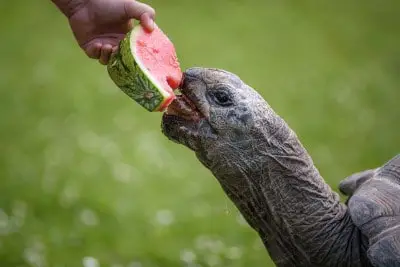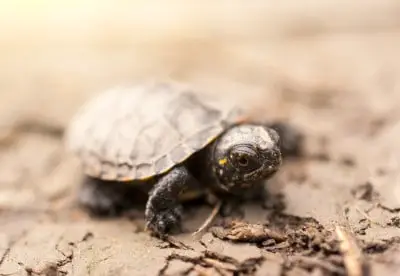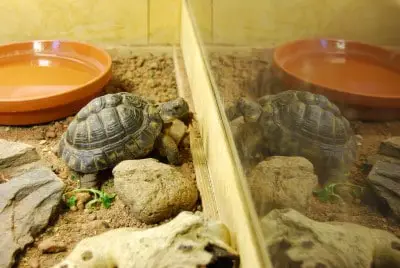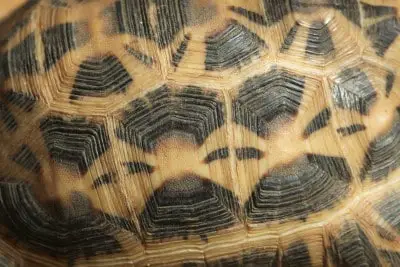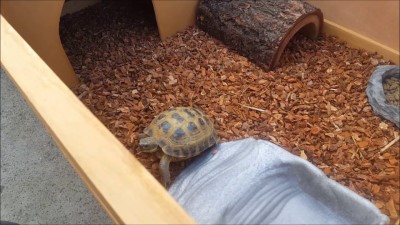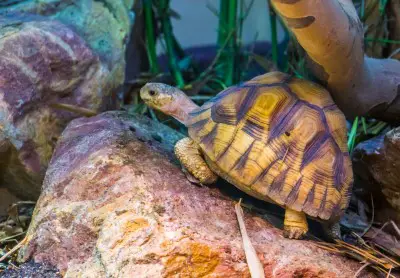Surprisingly, animals too struggle with obesity, and it takes a toll on their health as it does in humans. As a tortoise parent, you should be concerned about your pet’s weight since it affects its overall health.
Tortoises can get overweight if they have excess fat deposits in their body. Excessive fat deposits will show in the neck, groin, and limbs, as the skin covering the areas gets soft and chunky. It can also cause issues with their organs and can be fatal unless they lose the extra weight.
There’s a lot more information regarding overweight tortoises. Therefore, it would be best to learn the causes, dangers, and what to do to prevent them. Read on for all the information you may need.

Can Tortoises Be Overweight?
Given the tortoise’s ability to survive even in arid and harsh environments, it may be shocking to learn that they can get obese. Similarly, tortoise owners find it tasking to determine whether their pet is overweight or not. So, how do you tell when a tortoise is fat?
Tortoises can get overweight if you feed them excessively. Like humans, too many calories can cause fatty tissues to expand. When they gain extra weight, the fat goes to their exposed body parts like the neck and limbs. With these fats, they exert pressure on their organs which interferes with their general health. Therefore, being chunky can lead to many complications which risk their health.
Tortoises’ shells cover most of their bodies, making it difficult to monitor their weight or tell when something is amiss. However, a keen look can help you notice obesity signs to take the necessary precautions. The affected tortoises have folded skin around the neck and limbs, while healthy tortoises’ skins are generally tighter. Some tortoises may also have skin flaps even when they are in perfect health. If you are uncertain, you can look closely at young tortoises’ skin to compare, since they rarely get obese when young.
An obese tortoise has a bulging fatty limb, and the neck will be wider and contain folded skin. If you touch these particular areas, you will find them softer and easy to squish, but, if okay, the skin will be a tout.
In the early stages of being overweight, the tortoise finds it hard to retract its body into the shell. The fat layers on the limbs and the neck then get too chubby to fit into the shell. As in humans, obesity can pose severe issues with your pet. Hence, we recommend that you have your tortoise checked if you suspect that it has abnormal weight.
What Causes Obesity in Tortoises?
The underlying obesity-related health issues may be difficult to notice until they start taking a toll on your buddy. You can put in place certain measures to keep them in shape or to help them lose weight. First, we need to look at the root causes to know where to start.
The primary cause of fatness in torts is overfeeding. You may provide a well-balanced diet to your tortoise but if the portions are too large, your pet may get fat. If you give them food loaded with proteins such as cat or dog food, you will increase the fats depositing in their bodies. Lack of exercise is another possible cause of plumpness in torts since pets are not as active as their counterparts in the wild.
Many parents don’t realize when they are overfeeding them because they give food whenever it runs out in the bowl. Finishing the food does not necessarily mean that your pet needs more. All animals love food. Hence, the more you provide, the more your pet will eat, and the more weight they gain, the less mobile they will become, and this laxity can be fatal.
Tortoises in captivity are the most disadvantaged in this case. They live in small spaces, which don’t allow proper exercise. Wild tortoises don’t always get food in time, making them dependent on their bodies’ food reserves. Thus, they never have excess proteins that deposit in fat animals.
Read more about tortoise diet.
What Are the Effects of Obesity in Tortoises?
Obesity is not only dangerous to humans; animals also get affected by weight-related issues. Tortoises, in particular, suffer more because owners hardly spot the signs in time, given their unique physiology. Let’s have an overview of all the dangers faced by overweight tortoises.
An obese tortoise stores the extra fat in the limbs, groin, and neck. Once these regions bulge outwards, it becomes difficult to tuck its body into the shell when it needs to. The shell’s purpose is to house it when danger is lurking; therefore, it cannot hide from predators if it cannot use its shell as a defense. The survival chances significantly reduce as it becomes vulnerable to predatory attacks.
Consequently, the relentless efforts to retreat to its shell can also pose serious health concerns. Since the limbs are tight against the shell, the tortoise frequently rubs against the hard edges. The friction causes injuries that create sores on the areas in contact with the shell and can transfer to the internal organs as infections. When these infections progress, it becomes challenging for vets to salvage the situation, and, unless treated, the tortoise may lose its life.
Obesity can also endanger the tortoise’s life as it strains the internal and external organs. It affects its circulatory and digestive systems, which is risky to the tortoise. Moreover, the weight puts pressure on the joints, reducing the tortoise’s mobility and denies it the chance to exercise. This inactivity lowers immunity, and, in the long run, leads to a shorter lifespan. Even in good health, the tortoise still carries around a huge shell, and, if it gets too fat, the extra weight puts pressure on the joints, making it difficult to move. As a result, your pet will not walk or even hold itself up for too long.
How To Save Your Tortoise From Obesity
Your tortoise’s health is entirely your responsibility since it is directly connected to its diet. However, you can turn the situation around if your pet has added a few more pounds than recommended. Similarly, if your tortoise is fine, there are measures to ensure that it remains in perfect shape.
A Balanced Diet and Small Portions
As with humans, the best way to beat obesity is to eat a well-balanced diet instead of excessive proteins and carbs. Similarly, frequent feeding of large portions can increase the tortoise’s weight. A proper meal consists of the right amounts of carbohydrates, proteins, and vitamins. Some owners give too much protein, which contains a lot of calories. You can avoid high-calorie foods like flowers or certain foods for your tortoise to grow healthy.
If you have started to notice any changes, you need to swap the fatty foods for healthier alternatives. Consider roughages and leafy greens rich in calcium for strong bones and fiber for improved digestion. Also, monitor how much food you provide and the intervals between meals because you might be unknowingly overfeeding your pet.
Exercise
Notably, the bulk of stout tortoises are in captivity. When in the wild, the reptiles spend most of the time foraging for food, which is a form of exercise. In the process, they shed a lot of extra weight and keep fit as they roam around the forest. On the other hand, pet torts have most of their food delivered to them by their owner, which means they don’t exercise as much, putting them in danger of being chubby.
The good news is, owners can create ample time for their tortoises to exercise more. You can buy climbing toys or initiate playtime to help it burn the extra calories. Eventually, you will notice a drop in weight, and your buddy will be fine again.
Veterinary Checkups
Your vet can help you identify any signs of overfeeding in your tortoise; therefore, consider asking for professional help in case you get stuck. In the same light, a medical exam will help the doctor advise you on the best way to go, particularly to your pet.
We recommend checking in first before you embark on the fitness journey because you need to do it safely as per medical directives. By frequently measuring your tortoise’s weight, you can keep the recorded information to show your vet its progress.
Lastly
It may be shocking to realize that tortoises can suffer from obesity, a condition that pet parents should not downplay. For one, they may get too chunky to fit into the shell when they need to hide from predators. Secondly, their protruding skin often rubs against the shell causing sores and infections. The best and only way to help your pet is to provide a well-balanced diet and avoid excess proteins.
It is also crucial to monitor the portions to counter excessive feeding. Remember to help your tortoise exercise by purchasing climbing toys and playing with them whenever you can. Lastly, go for vet checkups and seek expert advice at all times if you have a hunch that something is amiss.


